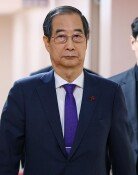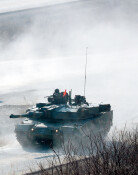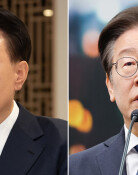‘1,000 Korean slave laborers died at Matsushiro construction site'
‘1,000 Korean slave laborers died at Matsushiro construction site'
Posted August. 07, 2023 08:06,
Updated August. 07, 2023 08:06

"More than 6,000 to 7,000 Koreans were conscripted and forced to work on the construction of the Matsushiro Underground Imperial Headquarters (Nagano, Nagano Prefecture, Japan). The estimated death toll is at least 300. It's a big pain for us, but not many people in Korea know about it."
A joint cheondoje (Buddhist ritual held to offer prayers for the spirit of the deceased) ritual was held at Geumgangsa Temple in Azumino City, Nagano Prefecture, Japan, on July 15 for the victims of Koreans who were forced to work on the construction of the Matsushiro Underground Imperial Headquarters during Japan’s colonial rule of Korea. The ceremony was led by Geumgangsa Temple’s head monk, Ven. Beophyeon (head of the Korean Buddhist Taegeo sect’s Open Zen Temple). "We always demand a genuine apology from Japan, but we need to reflect on how much we know about our history," he said in an interview at Open Zen Temple in Eunpyeong-gu district, Seoul on July 26.
- Many people don't know much about the victims at the Matsushiro Underground Imperial Headquarters.
"The Matsushiro Underground Imperial Headquarters was a massive war facility built by the Japanese government to replace the Hiroshima Underground Imperial Headquarters in preparation for the final battle for the mainland at the end of the Pacific War. An underground city containing the royal palace and military, administrative, and communications institutions was constructed under several kilometers of bedrock in all directions, and thousands of Koreans were forcibly mobilized, of whom an estimated 300 to 1,000 died."
-Is Geumgangsa Temple related to the victims at the facility?
"Geumgangsa Temple is a small Korean-style temple built by Korean Japanese near the Matsushiro Underground Imperial Headquarters over 40 years ago to commemorate the victims of the Matsushiro project. Unlike Japanese temples, it has a Samseonggak (three sages shrine), and both Shakyamuni Buddha and Amitabha Buddha are enshrined in the Daeungjeon (main) Hall. The temple is dedicated to the victims of the Korean War in hopes of their rebirth in paradise. When it became difficult to run the temple due to a small congregation at the temple, the president of the temple’s congregation, one of my acquaintances, asked me to help run it, so I took over."
-What made you start cheondoje for the victims?
"I was officially inaugurated as the head monk in 2018, but before that, the congregation intermittently held worship sessions among themselves. I felt that such a meaningful event should not be forgotten. So the year after I took office, I started holding memorial services jointly with various organizations and the Korean community in Japan."
-I hear there will be a memorial service on August 10 again.
"It will be held on August 10, the day Japan announced its intention to surrender to the Allied Forces in 1945, in front of the memorial monument to the victims of the Korean War in front of the Matsushiro Underground Imperial Headquarters’ Underground Lake. The temple holds a cheondoje ritual every July and a memorial service in August in front of the Matsushiro Underground Imperial Headquarters."
- Do you have any messages for Koreans?
"A few years ago, when relations between Japan and Korea were at a low point, the Korean Buddhist community in Japan asked me not to speak too strongly from a Korean perspective. They said that while I, as a monk, could just say as I please and then leave, they should stay put and withdraw my words..... As you can see, Korea-Japan relations are complicated. While we want Japan to understand past history properly, Korea should also make more efforts to tell the truth with an enlightened sense of history."
Chin-Ku Lee sys1201@donga.com







